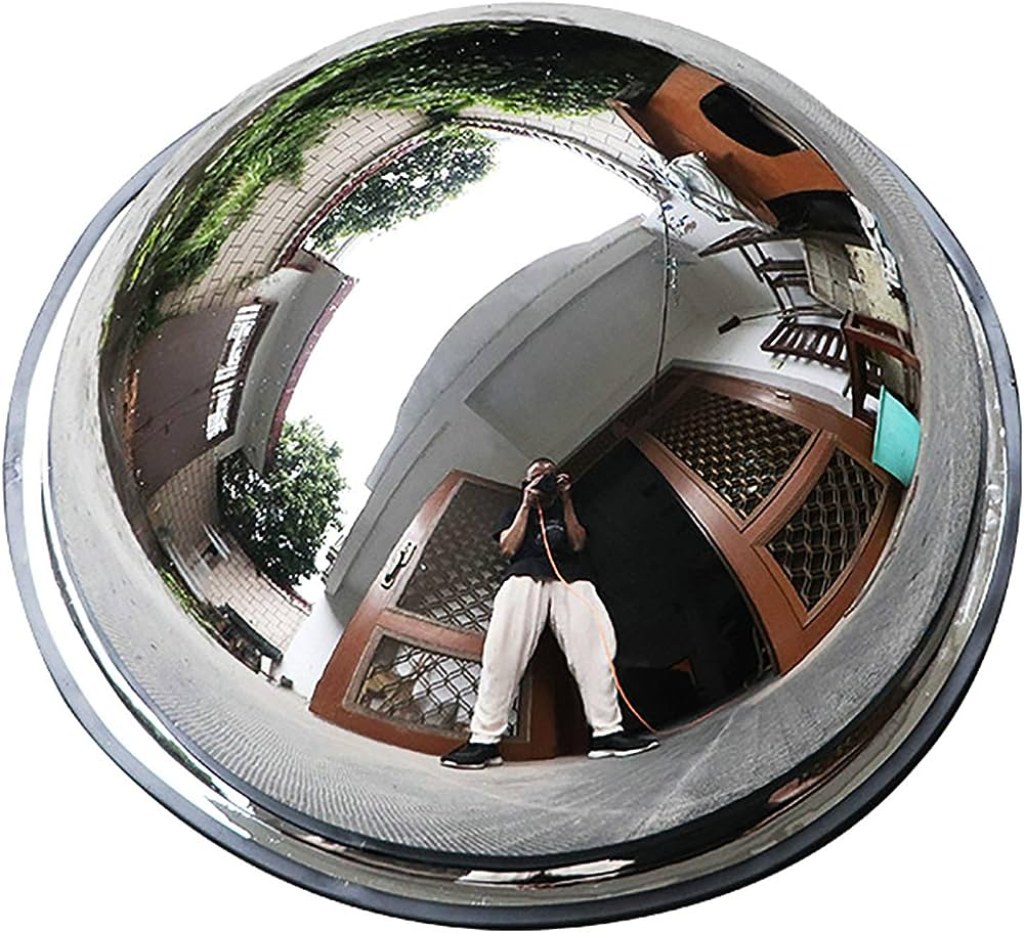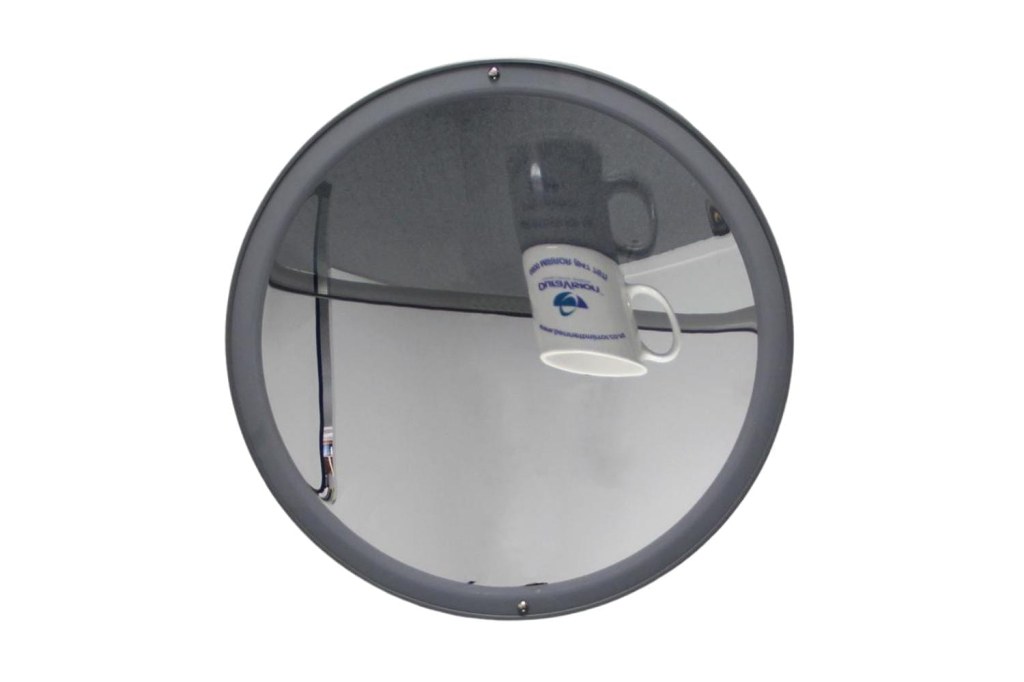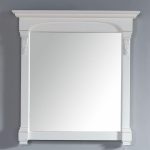Discover The Enchanting Allure Of Our Large Spherical Mirror – Click To Elevate Your Décor!
Large Spherical Mirror: An Overview of an Essential Optical Device
Greetings, Readers! In this article, we will dive into the fascinating world of large spherical mirrors. As one of the most important optical devices, these mirrors play a crucial role in various fields, from astronomy to microscopy. Join us as we explore the intricacies and applications of these remarkable creations.
Introduction
What is a large spherical mirror? 🪞
3 Picture Gallery: Discover The Enchanting Allure Of Our Large Spherical Mirror – Click To Elevate Your Décor!



A large spherical mirror refers to a curved mirror with a spherical shape. It is created by polishing the surface of a glass or metal sphere, resulting in a unique reflective surface. These mirrors are known for their ability to reflect light and form images, making them invaluable tools in optics.

Image Source: omelomirrors.com
Who uses large spherical mirrors? 👥
Large spherical mirrors are utilized by professionals and enthusiasts in various fields. Astronomers rely on them to capture and analyze celestial objects, while photographers employ them for unique visual effects. Additionally, these mirrors find applications in medical imaging, solar energy systems, and even in everyday objects like car headlights.
When were large spherical mirrors first used? ⏳

Image Source: media-amazon.com
The origins of spherical mirrors can be traced back to ancient civilizations. The earliest known use of mirrors dates back to ancient Egypt and Mesopotamia, where polished metal discs were used as rudimentary mirrors. However, the scientific understanding and manufacturing of spherical mirrors as we know them today began to emerge in the 17th century.
Where are large spherical mirrors produced? 📍

Image Source: arborsci.com
Large spherical mirrors are manufactured in specialized facilities equipped with advanced machinery and precision optics instruments. These facilities can be found in various countries around the world, with notable production centers in countries like Germany, the United States, and Japan.
Why are large spherical mirrors important? ❓
The significance of large spherical mirrors lies in their ability to manipulate light. By reflecting and focusing light rays, these mirrors enable scientists, engineers, and researchers to observe and study objects that are otherwise invisible to the naked eye. Their applications range from advanced telescopes to medical imaging devices, and they contribute greatly to technological advancements in numerous fields.
How are large spherical mirrors made? 🏭
The production of large spherical mirrors involves a meticulous process. First, a glass or metal sphere is carefully shaped and polished to achieve a perfectly smooth surface. This surface is then coated with a reflective material, typically aluminum or silver, to enhance its reflective properties. Finally, the mirror is carefully inspected and tested for quality before it is deemed ready for use.
Advantages and Disadvantages of Large Spherical Mirrors
Advantages of Large Spherical Mirrors 👍
1. Versatility: Large spherical mirrors can be used in various applications, ranging from scientific research to everyday devices.
2. Imaging capabilities: These mirrors can form clear and accurate images, making them essential in fields like astronomy and microscopy.
3. Light gathering: Due to their curved shape, large spherical mirrors can gather and focus light, making them ideal for optical systems that require high light collection efficiency.
4. Cost-effective: Compared to other types of mirrors, large spherical mirrors can be manufactured at a relatively low cost, making them accessible to a wide range of users.
5. Durability: When properly maintained, these mirrors can have a long lifespan, ensuring reliable performance for extended periods.
Disadvantages of Large Spherical Mirrors 👎
1. Spherical aberration: Large spherical mirrors can suffer from a phenomenon known as spherical aberration, which results in blurry images at the edges.
2. Limited field of view: Due to their shape, these mirrors can have a limited field of view, which may restrict their applications in certain scenarios.
3. Size and weight: As the size of the mirror increases, so does its weight, making it challenging to handle and mount in certain situations.
4. Sensitivity to temperature changes: Large spherical mirrors can undergo thermal expansion or contraction, which can affect their optical performance.
5. Specialized manufacturing requirements: Producing large spherical mirrors requires specialized equipment and expertise, limiting their availability and increasing the cost in some cases.
Frequently Asked Questions (FAQs)
1. Can large spherical mirrors be used in telescopes?
Yes, large spherical mirrors are commonly used in telescopes, especially in Newtonian reflector telescopes, where they serve as the primary mirror to gather and focus incoming light.
2. Are large spherical mirrors used in everyday objects?
Yes, large spherical mirrors can be found in many everyday objects, such as car headlights, traffic mirrors, and security mirrors, where they help improve visibility and safety.
3. How do large spherical mirrors enhance solar energy systems?
Large spherical mirrors are utilized in solar concentrators, which capture and focus sunlight onto a smaller area, thereby increasing the intensity of the heat generated for various applications, including power generation.
4. Are there any alternatives to large spherical mirrors?
Yes, other types of mirrors, such as parabolic mirrors and flat mirrors, can serve as alternatives to large spherical mirrors, depending on the specific requirements of the application.
5. Can large spherical mirrors be used underwater?
While large spherical mirrors can be used underwater, they require additional protective coatings to prevent corrosion and maintain their optical properties in the aquatic environment.
Conclusion: Embracing the World of Large Spherical Mirrors
In conclusion, large spherical mirrors are truly remarkable optical devices that have revolutionized our understanding of the universe and improved various aspects of modern life. From unraveling the mysteries of the cosmos to enhancing imaging technologies, these mirrors continue to shape the way we observe and interact with the world around us. So, whether you’re an astronomer gazing at distant stars or an everyday user benefiting from their presence in common objects, take a moment to appreciate the immense contributions of large spherical mirrors.
With this newfound knowledge, we encourage you to delve deeper into the subject, explore their applications, and perhaps even consider incorporating them into your own endeavors. The possibilities are endless when it comes to large spherical mirrors!
Disclaimer: The views and opinions expressed in this article are solely those of the author and do not necessarily reflect the official policy or position of any agency or organization. The information provided is for general educational purposes only and should not be relied upon for making any decisions. Consult with a professional for specialized advice related to your specific situation.
This post topic: Mirror


